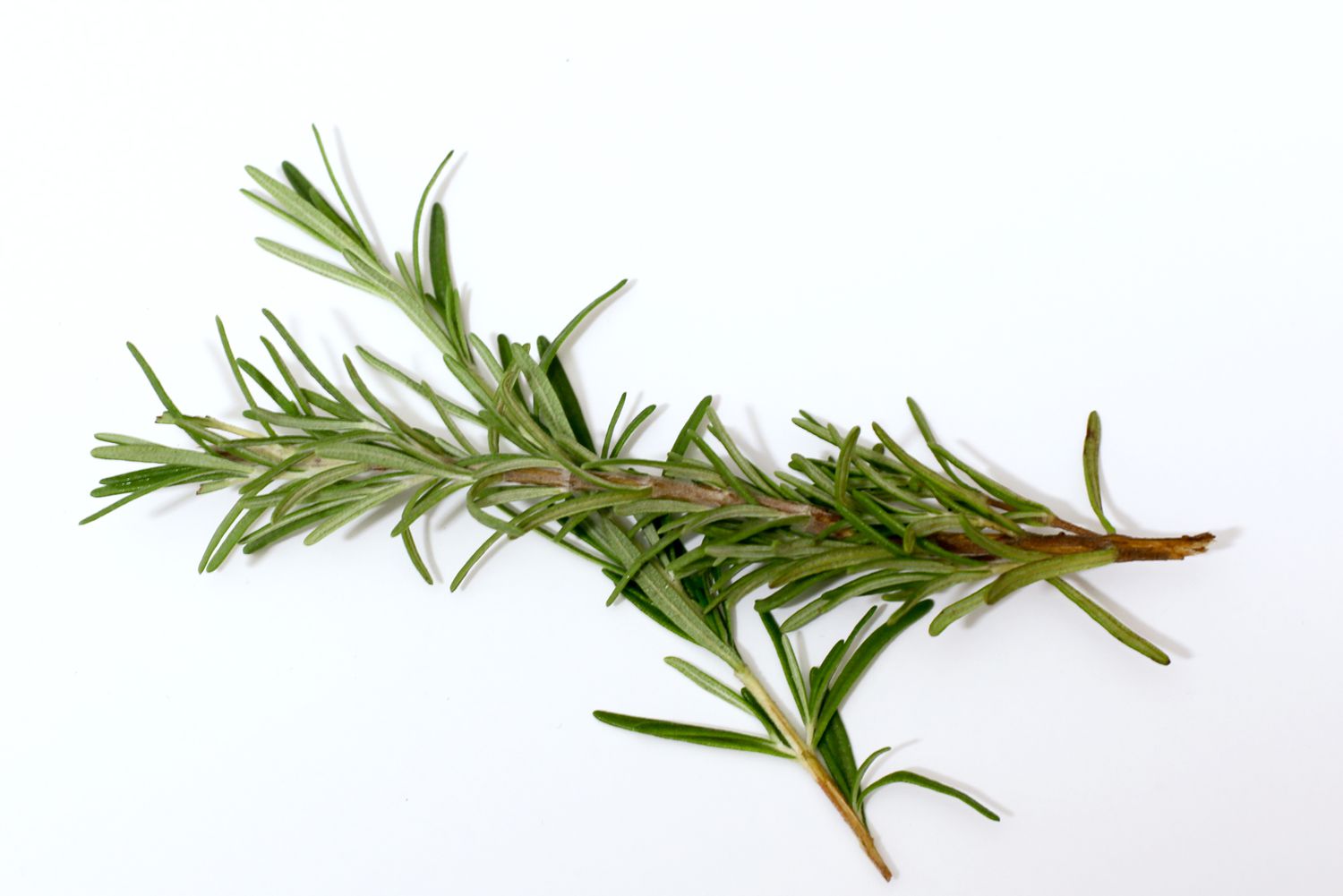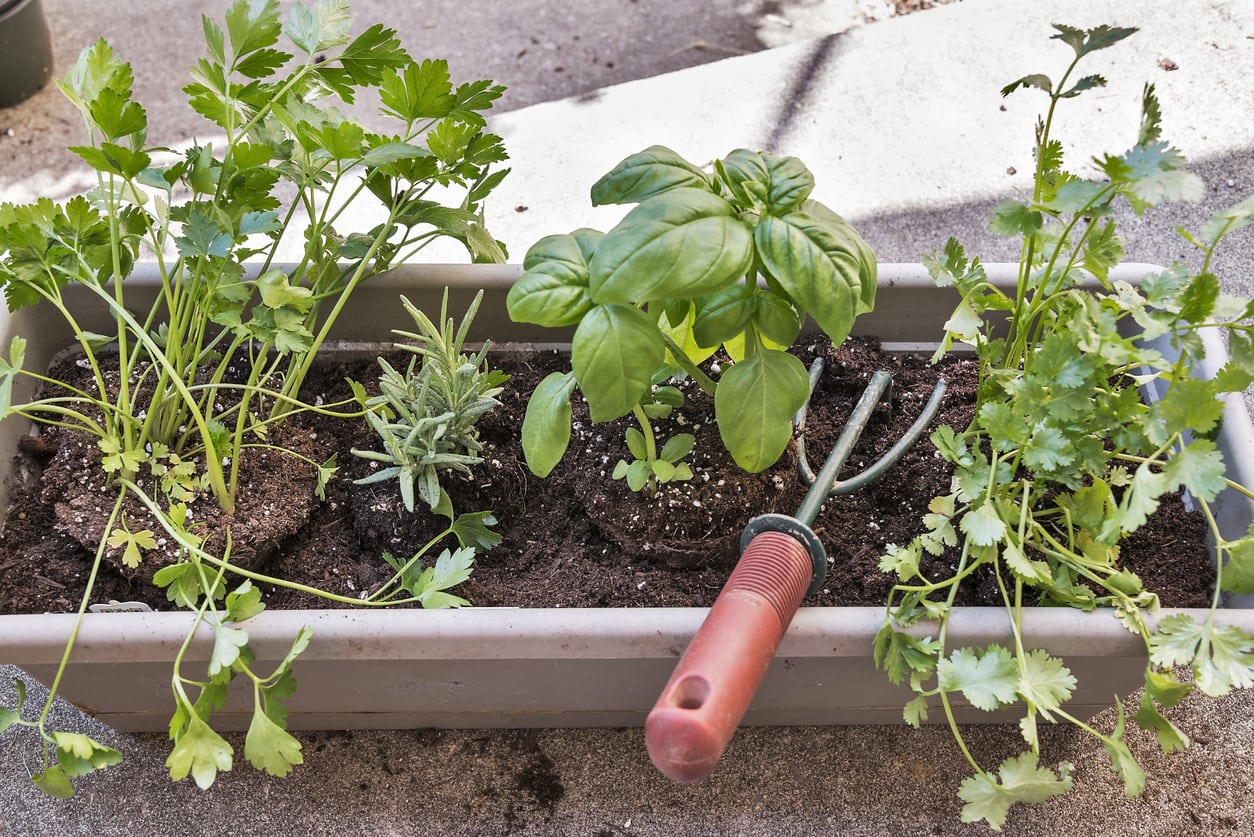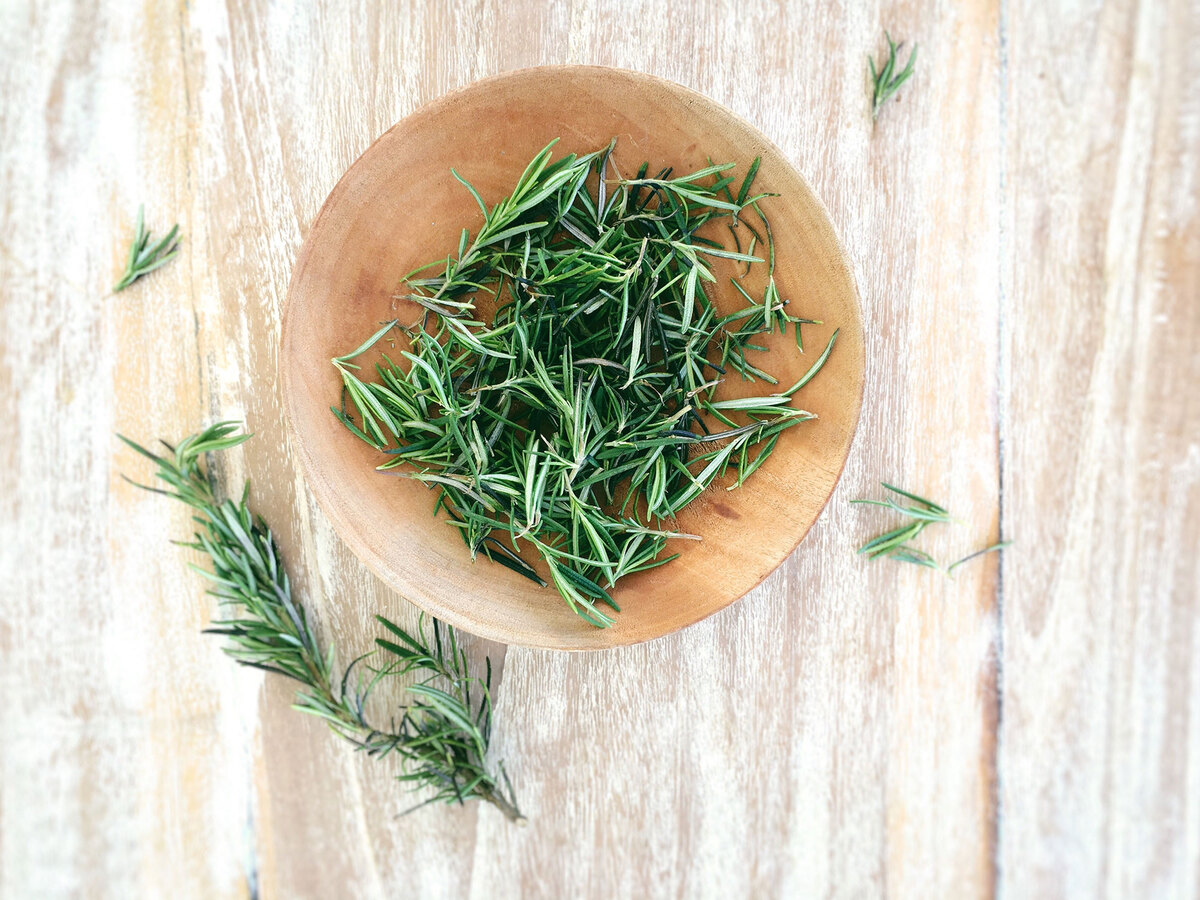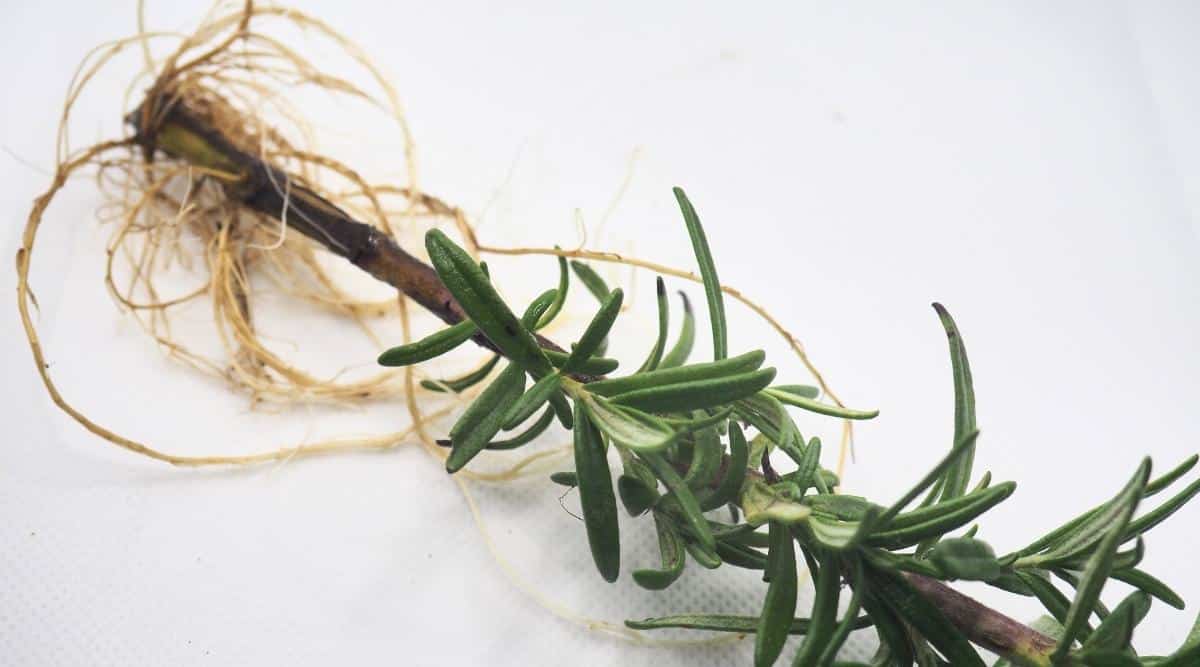Home>Types of Gardening>Edible Gardening>What To Do With Rosemary


Edible Gardening
What To Do With Rosemary
Published: January 30, 2024
Discover the endless possibilities of edible gardening with rosemary. Learn how to grow, harvest, and use this versatile herb in your culinary creations.
(Many of the links in this article redirect to a specific reviewed product. Your purchase of these products through affiliate links helps to generate commission for Chicagolandgardening.com, at no extra cost. Learn more)
Table of Contents
Introduction
Welcome to the world of edible gardening, where you can cultivate and enjoy a wide variety of herbs and plants right in your own backyard. One such versatile and aromatic herb is rosemary. With its fragrant needle-like leaves and delightful flavors, rosemary has become a staple in kitchens and gardens worldwide.
Rosemary (Rosmarinus officinalis) is not just a herb with a pleasing aroma; it also boasts several health benefits and uses beyond the kitchen. Its distinct flavor and aroma can elevate your culinary creations to new heights, but that’s not all. Rosemary has long been cherished for its medicinal properties, beauty benefits, and DIY home remedies. Additionally, growing and caring for rosemary plants is relatively easy, making it a perfect choice for both novice and seasoned gardeners.
In this article, we’ll explore the various benefits of rosemary, its culinary and medicinal uses, as well as its potential in beauty and skincare products. We’ll also delve into some DIY home remedies featuring this remarkable herb. Furthermore, we’ll provide you with key tips on how to grow rosemary successfully and how to harvest and store it for future use.
So, whether you’re a seasoned gardener looking to expand your culinary repertoire or someone new to gardening hoping to reap the benefits of rosemary, this article will equip you with the knowledge and inspiration you need.
Benefits of Rosemary
Rosemary is not just a flavorful herb but also a treasure trove of health benefits. From its antioxidant properties to its potential for improving digestion, this herb has been celebrated for centuries for its medicinal properties.
One of the key benefits of rosemary is its rich antioxidant content, which helps protect the body’s cells from damage caused by free radicals. These antioxidants can help boost the immune system and reduce the risk of chronic diseases, such as heart disease and certain types of cancer.
Another significant advantage of rosemary is its potential to enhance memory and cognitive function. Research indicates that rosemary contains compounds that may improve memory and concentration, making it an excellent herb for students or anyone looking to give their brain a boost.
Rosemary is also known for its anti-inflammatory properties. It contains natural compounds that can help reduce inflammation in the body, which is associated with various health conditions, including arthritis and asthma.
Furthermore, rosemary is believed to have antimicrobial properties, making it effective in fighting off bacteria and infections. It has been used traditionally as a natural remedy for coughs, colds, and sore throats.
In addition to its internal benefits, rosemary also offers beauty benefits for the skin and hair. It has natural astringent properties that can help tone the skin and reduce excess oil, making it an ideal ingredient in skincare products. Rosemary-infused hair rinses have also been used to stimulate hair growth and improve scalp health.
Overall, the numerous benefits of rosemary make it a valuable addition to any garden or kitchen. Its versatile nature and the range of advantages it offers are why it has stood the test of time as a beloved herb.
Culinary Uses of Rosemary
Rosemary is a beloved herb in the culinary world, thanks to its distinct flavor and aromatic qualities. Whether used as a rub, seasoning, or garnish, this herb adds a delightful touch to a wide range of dishes.
One of the most popular culinary uses of rosemary is as a seasoning for roasted meats and vegetables. Its earthy and pine-like flavor enhances the natural flavors of these dishes, giving them a savory and fragrant profile. Simply sprinkle some chopped rosemary leaves over your roasted chicken, potatoes, or root vegetables before cooking, and let the herb work its magic.
Rosemary is also commonly used in marinades for meats, especially lamb and pork. The herb’s strong flavor helps tenderize the meat while imparting a delicious taste. You can combine rosemary with other herbs, garlic, olive oil, and lemon juice to create a flavorful marinade that will elevate your grilled or roasted dishes.
Another popular use of rosemary is in homemade bread and focaccia. Adding fresh or dried rosemary to the dough not only adds a fragrant aroma but also infuses the bread with a subtle herbal note. You can also brush the bread with rosemary-infused olive oil before baking for an extra burst of flavor.
For those who enjoy culinary experimentation, rosemary can be used to create unique and flavorful condiments. Infuse olive oil with rosemary sprigs to create a versatile oil that can be drizzled over salads, pasta, or grilled vegetables. You can also make a rosemary-infused vinegar by steeping the herb in white or red wine vinegar. This vinegar can be used in marinades, dressings, or even as a tangy ingredient in cocktails.
Lastly, don’t forget the classic combination of rosemary and potatoes. Whether you’re making crispy roasted potatoes, creamy mashed potatoes, or hearty potato soup, a touch of rosemary can bring out the best flavors of this beloved starch.
With its versatility and ability to elevate various dishes, it’s no wonder that rosemary is a staple herb in kitchens around the world. Its distinct flavor and aroma add depth and complexity to both simple and elaborate recipes, making it a go-to ingredient for home cooks and professional chefs alike.
Medicinal Uses of Rosemary
Rosemary has a long history of being used for its various medicinal properties. From promoting digestion to relieving headaches, this herb has been valued for its potential health benefits.
One of the primary medicinal uses of rosemary is its ability to improve digestion. The essential oils found in rosemary can help stimulate the production of bile, which aids in the breakdown of fats and improves overall digestion. It can also help relieve indigestion, bloating, and other digestive discomforts.
Furthermore, rosemary has been used as a natural remedy for headaches and migraines. The herb contains compounds that have a calming effect on the nervous system, which can help alleviate tension and reduce the frequency and severity of headaches. Massaging rosemary-infused oil onto the temples or inhaling its aroma may provide relief from headaches.
Rosemary also possesses anti-inflammatory properties, which can be beneficial for conditions such as arthritis and rheumatism. The herb’s anti-inflammatory compounds may help reduce pain and swelling in the joints, providing relief for those suffering from these conditions.
Another notable medicinal use of rosemary is its potential to support the respiratory system. The herb has been used traditionally to soothe respiratory ailments such as coughs, colds, and congestion. It is believed to have expectorant properties that can help loosen mucus, making it easier to expel from the respiratory tract.
In addition, rosemary is known for its antiseptic and antimicrobial properties. These properties make it effective in fighting off bacteria and infections, both internally and externally. Rosemary-infused tea or gargling with rosemary-infused water may help alleviate sore throat symptoms and support overall oral health.
Furthermore, some research suggests that rosemary may have potential anti-cancer properties. The antioxidants found in rosemary can help neutralize harmful free radicals, which may contribute to the development of cancer cells. While further studies are needed, incorporating rosemary into your diet as part of a balanced and healthy lifestyle may be beneficial.
It is important to note that while rosemary has a long history of medicinal use, it should not be used as a substitute for professional medical advice. If you are considering using rosemary for its potential health benefits, it is best to consult with a healthcare professional to ensure its safe and appropriate use.
Beauty and Skincare with Rosemary
Aside from its culinary and medicinal uses, rosemary is also valued for its beneficial properties in beauty and skincare. The herb’s natural compounds make it a popular ingredient in various beauty products and DIY skincare remedies.
One of the key benefits of rosemary for skincare is its astringent properties. It helps tighten the skin and reduce excess oil, making it an ideal ingredient for those with oily or combination skin. Rosemary-infused toners or facial mists can help balance the skin’s oil production and minimize the appearance of pores.
Rosemary is also known for its antioxidant content, which can help protect the skin against environmental stressors and premature aging. Its antioxidants can help neutralize free radicals and reduce the appearance of fine lines, wrinkles, and age spots, giving the skin a more youthful and radiant appearance.
In addition, rosemary has soothing and anti-inflammatory properties that can benefit sensitive or acne-prone skin. It can help calm irritation, redness, and inflammation, making it a valuable ingredient in products that aim to alleviate skin conditions such as acne, eczema, or dermatitis.
Furthermore, rosemary-infused oils or extracts can be used in scalp and hair care products. Rosemary has been traditionally used to stimulate hair growth, improve scalp health, and help reduce dandruff. Massaging the scalp with rosemary-infused oil can help increase blood circulation and promote healthy hair growth.
Rosemary can also be incorporated into DIY skincare remedies. A simple face steam with rosemary leaves can help cleanse and clarify the skin. Just add a few rosemary sprigs to a bowl of hot water, cover your head with a towel, and allow the steam to envelop your face for a few minutes. This will open up the pores and detoxify the skin, leaving it refreshed and rejuvenated.
As with any skincare ingredient, it’s important to patch test and observe how your skin reacts to rosemary. Although generally considered safe, some individuals may be sensitive to the herb. If you experience any adverse reactions, discontinue use and consult a dermatologist.
With its beneficial properties for the skin and hair, rosemary is a valuable asset in the realm of beauty and skincare. Incorporating rosemary-infused products or DIY remedies into your routine can help nourish, rejuvenate, and enhance the natural beauty of your skin and hair.
DIY Home Remedies with Rosemary
Rosemary is not only a versatile herb in the kitchen but also a useful ingredient in DIY home remedies. Its natural compounds and beneficial properties make it a popular choice for various homemade remedies for health, wellness, and household purposes.
One of the simplest DIY remedies with rosemary is a homemade herbal tea. Steeping rosemary leaves in hot water creates a soothing and aromatic tea that can help relieve stress, improve digestion, and uplift the mood. You can enjoy a cup of rosemary tea on its own or infuse it with other herbs or flavors to enhance its taste and benefits.
For those looking to promote healthy hair and scalp, a rosemary-infused hair rinse can be beneficial. Boil fresh rosemary sprigs in water, let it cool, strain, and use the infusion as a final rinse after shampooing. The rosemary-infused rinse can help stimulate hair growth, soothe the scalp, and add shine to the hair.
If you’re in need of a natural remedy for headaches or stress relief, you can create a rosemary essential oil roller. Dilute rosemary essential oil with a carrier oil and apply it to your temples, wrists, or back of the neck for a soothing and calming effect. The aroma of rosemary can help alleviate tension and promote relaxation.
In addition, rosemary can be used to create a homemade cleaning spray. Steep rosemary leaves in white vinegar for a few weeks, strain the mixture, and transfer it to a spray bottle. This natural cleaning spray can be used to clean kitchen countertops, bathrooms, and other surfaces, thanks to the antiseptic and antimicrobial properties of rosemary.
If you’re dealing with muscle aches or joint pain, a rosemary-infused massage oil or salve can provide relief. Combine rosemary-infused oil with a carrier oil, such as coconut or jojoba oil, and massage it onto the affected areas. This DIY remedy can help reduce inflammation, improve circulation, and soothe sore muscles.
Whether you’re seeking natural remedies for wellness, beauty, or household purposes, rosemary offers a range of options. These DIY home remedies allow you to harness the natural healing properties of rosemary and create personalized solutions for your specific needs.
Tips for Growing Rosemary
Rosemary is a hardy and versatile herb that can thrive in various climates and conditions. Whether you’re an experienced gardener or just starting out, here are some tips to help you successfully grow rosemary:
- Choose the right location: Rosemary prefers a sunny location with well-draining soil. Make sure the area receives at least six hours of direct sunlight each day.
- Provide good drainage: Rosemary dislikes wet feet, so it’s crucial to ensure that the soil has excellent drainage. Plant it in raised beds or containers with drainage holes, or amend the soil with sand or gravel to improve drainage.
- Water sparingly: While rosemary is drought-tolerant, it still needs regular watering, especially during its early growth stages. Water deeply a few times a week, allowing the soil to dry out between waterings. Avoid overwatering, as excessive moisture can lead to root rot.
- Prune regularly: Pruning rosemary helps promote bushier growth and prevents legginess. Trim the plant regularly, especially after flowering, to maintain its shape and encourage new growth.
- Protect from extreme cold: Although rosemary is a hardy herb, it may need protection during harsh winter months. If you live in a colder climate, consider covering the plants with a frost cloth or bringing potted rosemary indoors during freezing temperatures.
- Feed with compost: Rosemary benefits from organic matter in the soil. Add compost or well-rotted manure to the soil before planting to provide nutrients and improve soil fertility. You can also feed it with a balanced organic fertilizer during the growing season.
- Propagate through cuttings: Rosemary is easy to propagate through stem cuttings. Take 4 to 6-inch long cuttings from a healthy plant, remove the lower leaves, and plant the cuttings in well-draining soil. Keep them moist and place them in a warm area until roots develop.
- Harvest carefully: When harvesting rosemary, avoid stripping the plant completely. Instead, pinch or cut a few sprigs as needed, leaving enough foliage for the plant to continue growing. Harvest in the morning when the essential oils are at their peak.
By following these tips, you’ll be on your way to successfully growing your own rosemary. Whether you choose to plant it in your garden, in containers, or even indoors, this aromatic herb is sure to reward you with its delightful flavors and captivating fragrance.
Harvesting and Storing Rosemary
Harvesting and properly storing rosemary is essential to ensure its flavor and aroma are preserved for future use. Here are some tips to help you harvest and store rosemary:
- Timing: Rosemary can be harvested throughout the growing season, but it’s best to wait until the plant has established itself and is at least 6 to 8 inches tall. Avoid harvesting too much early in the growing season to allow the plant to establish a good root system.
- Method: When harvesting rosemary, use clean, sharp scissors or pruning shears to cut the sprigs just above a leaf node. This will encourage new growth and ensure a neat appearance for the plant. Avoid stripping the plant completely, as it may stunt its growth.
- Timing of harvest: The flavor and aroma of rosemary are at their peak just before the plant starts to flower. Harvest in the morning when the essential oils are concentrated in the leaves. This will give you the most flavorful and aromatic sprigs.
- Drying: To dry rosemary, gather the harvested sprigs into small bundles and hang them upside down in a warm, well-ventilated area. Make sure the area is clean and free from dust or debris. Allow the sprigs to dry completely, which usually takes about 1 to 2 weeks.
- Storage: Once dried, remove the leaves from the stems by gently rubbing them with your fingers. Discard any woody or discolored leaves. Store the dried rosemary leaves in an airtight container, such as a glass jar or airtight plastic bag. Keep the container in a cool, dark place away from direct sunlight.
- Freezing: Alternatively, you can freeze rosemary to preserve its flavors. Wash and dry the sprigs, then strip the leaves from the stems. Place the leaves in an airtight freezer bag or container and store in the freezer. Frozen rosemary can be used directly in cooking, and the flavor will be preserved for several months.
- Culinary uses: When using dried rosemary in recipes, remember that its flavor is concentrated, so use it sparingly. If a recipe calls for fresh rosemary and you only have dried, use approximately one-third to one-half of the amount indicated.
By following these harvesting and storing techniques, you can ensure that your homegrown rosemary retains its flavor and aroma for an extended period. Whether used in culinary dishes, homemade remedies, or infused oils, your harvested rosemary will add a delightful touch to any recipe.
Conclusion
Rosemary is truly a versatile and remarkable herb that offers an array of benefits, both in the kitchen and beyond. From its delightful flavors and aromas to its potential medicinal properties, rosemary has proven its worth time and time again.
In the culinary world, rosemary adds a special touch to a wide range of dishes, from roasted meats and vegetables to homemade bread and condiments. Its distinct flavor and aroma elevate the simplest of recipes, making them truly memorable.
But rosemary’s benefits extend far beyond the kitchen. Its potential medicinal uses, such as aiding digestion, relieving headaches, and supporting respiratory health, have made it a popular choice for those seeking natural remedies.
In the realm of beauty and skincare, rosemary shines as a natural ingredient that can support healthy skin, hair, and scalp. Its astringent and antioxidant properties make it a valuable addition to various skincare products, from toners to hair rinses.
Furthermore, rosemary offers endless possibilities for DIY home remedies, whether it’s creating herbal teas, massage oils, or even herbal cleaning sprays. Its versatility and availability make it an accessible and cost-effective option for those looking to incorporate natural remedies into their daily lives.
By following the tips for growing, harvesting, and storing rosemary, you can ensure a bountiful and sustainable supply of this amazing herb. Whether you choose to grow it in your garden, on your windowsill, or even in containers, rosemary is relatively easy to care for and provides an abundance of flavors and aromas.
So, whether you’re an avid gardener, a culinary enthusiast, or someone seeking natural remedies, rosemary is a must-have herb. Its unique qualities and beneficial properties make it a valuable addition to any garden, kitchen, or wellness routine.
So, why not embark on your own journey of edible gardening with rosemary as your steadfast companion? From its humble beginnings as a seed or a cutting, your rosemary plants will flourish and reward you with its delightful flavors, captivating fragrance, and boundless possibilities. Happy gardening and enjoy the wonders of rosemary!






